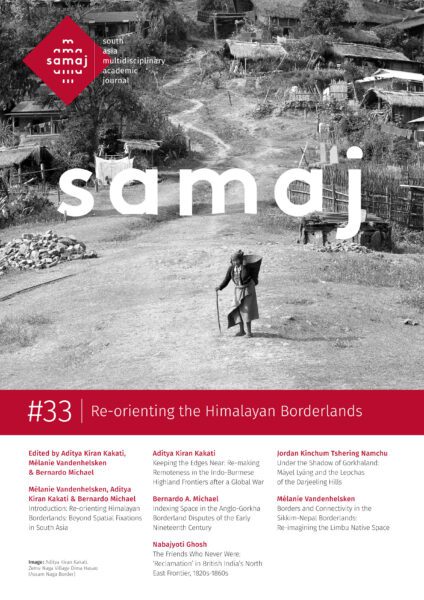
Lab member Aditya Kiran Kakati, an early postdoctoral mobility fellow at the University of Amsterdam and SOAS, University of London, has co-edited a special issue of the South Asia Multidisciplinary Academic Journal (SAMAJ) titled “Re-orienting the Himalayan Borderlands,” published in collaboration with Mélanie Vandenhelsken and Bernardo A. Michael.
This special issue critically rethinks the conceptualisation of borders in the Eastern Himalayas as clearly delimited by fixed lines, arguing that they are instead dynamic zones of negotiation, resistance, and reimagining. With a regional focus encompassing Nepal, Sikkim, West Bengal, Northeast India, and the Indo-Myanmar frontier, the collection reveals how colonial categories, intellectual constructions, legal instruments, and mapping practices produced marginalisation, while also demonstrating how these processes remain incomplete and are continually reworked by borderland communities.
The issue employs the concept of “borderwork” to grasp how communities contribute to the production of borderlands, disrupting colonial and post-colonial territorial fixations. It highlights how borders are processes, made and remade through lived practices, contestation, memory, and alternative spatial imaginaries as much as by dominant socio-political forces. The collection examines conceptual frameworks such as Zomia and Highland Asia in the Eastern Himalayas, revealing both their limits and significance in understanding native and pre-colonial geographies, as well as the permanent unfixity of borderlands in this region.
In addition to co-authoring the introduction, Aditya contributes an individual article titled “Keeping the Edges Near: Re-making Remoteness in the Indo-Burmese Highland Frontiers after Global War.” This piece reconceptualises remoteness in the Indo-Burmese Highland frontiers following the Second World War, examining how state actors re-affirmed the remoteness of the region and its inhabitants by withdrawing the global integration and resources offered during wartime once imperial defence was accomplished. The article unpacks intellectual histories of frontiers and remoteness in the mid-1940s that shaped spatial binaries and state interventions that continue to influence citizenship, identity, and resource struggles today.
Together, the issue offers a decentred, historically grounded perspective on borderlands as contested spaces shaped by both territorial ambitions and local spatial imaginaries.
Explore the full special issue here (open access).
